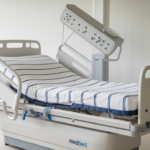Have you ever wondered how to navigate the delicate task of managing grievances within your healthcare organization? Ensuring patient satisfaction and resolving grievances promptly is crucial. In this blog post, we’ll explore practical strategies to help you handle grievances seamlessly, fostering a culture of understanding and trust.

Content
Transparent Communication
The first step in effectively managing grievances is establishing transparent communication channels. Patients need to feel heard and understood, and providing clear avenues for expressing their concerns is paramount. This can include open-door policies, suggestion boxes, or dedicated grievance hotlines. Ensuring that patients know these channels promotes trust and encourages them to voice their concerns.
Empower Staff with Conflict Resolution Skills
Training your healthcare staff in effective conflict resolution is an investment that pays off in patient satisfaction. Equipping them with the skills to handle grievances professionally and empathetically resolves issues swiftly and reinforces the patient-provider relationship. Staff members who feel confident in managing conflicts contribute significantly to the overall positive experience for patients.
Implement Robust Record-Keeping Systems
Accurate and detailed record-keeping is essential in grievance management. Implementing robust systems to document patient concerns, resolutions, and follow-up actions not only ensures accountability but also provides valuable insights for continuous improvement. A well-maintained record system is a powerful tool for identifying patterns and addressing systemic issues that may contribute to grievances.
Establish a Fair and Efficient Resolution Process
A clear and efficient grievance resolution process is critical to managing issues promptly. Clearly define the steps involved, ensuring each grievance receives a thorough investigation. Establish reasonable timelines for resolution and keep patients informed throughout the process. A fair and transparent resolution process demonstrates your commitment to addressing concerns and improves overall patient satisfaction.
Learn from Every Grievance: Continuous Improvement
Viewing grievances as opportunities for improvement is a proactive approach that can transform your healthcare organization. Regularly analyze the root causes of grievances and use the insights gained to implement positive changes. This commitment to continuous improvement addresses immediate concerns and fosters a culture of learning and adaptability within your organization.
Utilize Technology for Streamlined Healthcare Grievance Management
In the digital age, leveraging technology can significantly enhance the efficiency of grievance management. Implementing dedicated software or platforms for healthcare grievance management allows for streamlined tracking, reporting, and analysis. This reduces administrative burdens and facilitates a more data-driven and proactive approach to resolving patient concerns.
Conclusion
Effectively managing grievances in your healthcare organization is not just about problem-solving; it’s about cultivating an environment of trust, communication, and continuous improvement. By embracing transparent communication, empowering staff with conflict resolution skills, implementing robust record-keeping systems, establishing fair resolution processes, learning from grievances, and utilizing technology, you can navigate the waves of patient concerns with finesse.

Helen Bradley is a health blogger and the founder of her own blog about fitness. She has been blogging for three years now and loves to share what she learns with others. Helen enjoys reading, cooking, and staying active outdoors.











